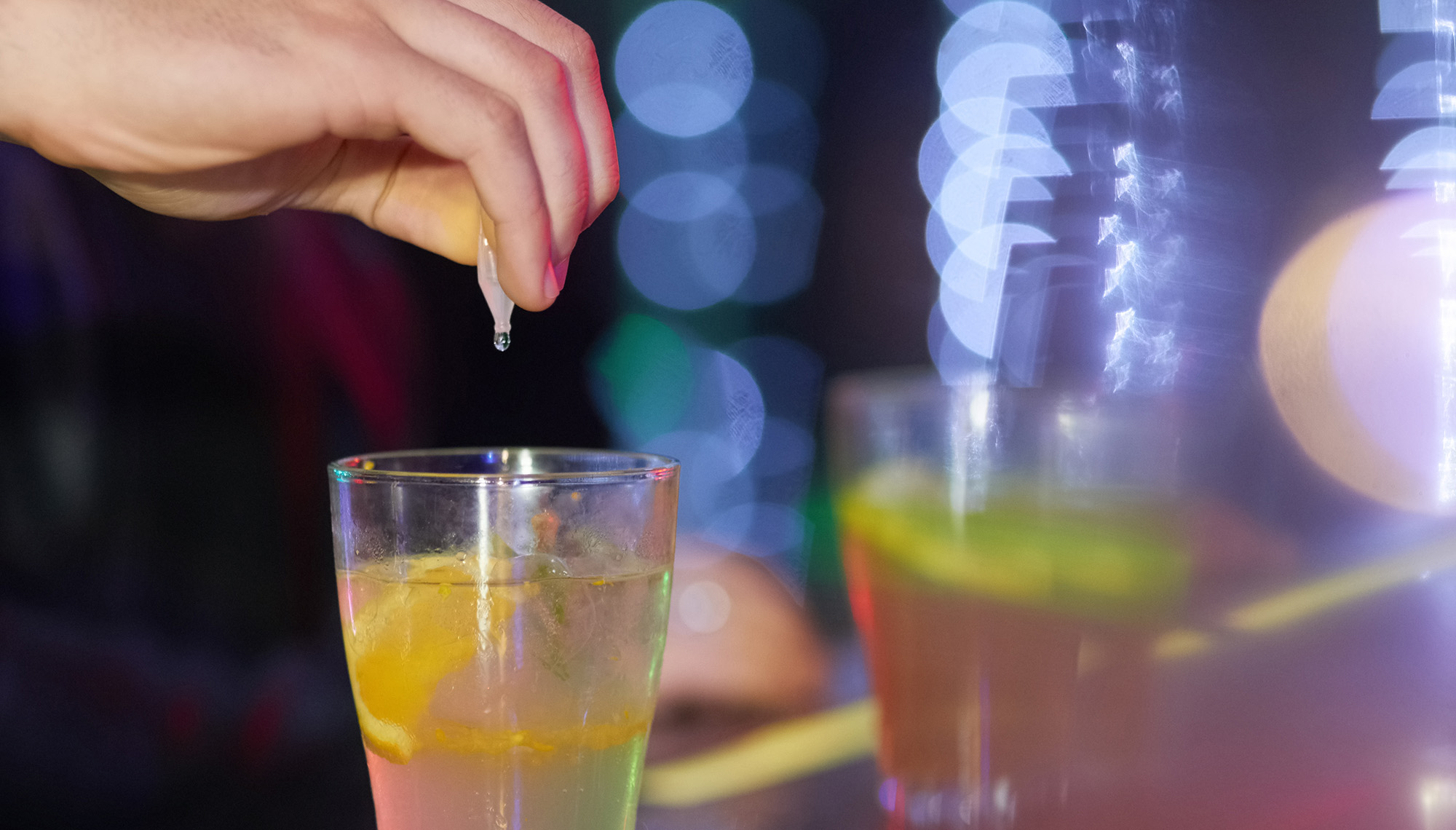Test Results Show Varied Detection, Reliability
A variety of alcohol, drugs, tranquilizers, and antidepressants can be used in an effort to commit sexual assault crimes. Drug detection kits are supposed to help alert people whether their drink has been spiked, but they don’t always work as advertised. To better understand their efficacy, we evaluated six commercially available colorimetric kits, testing them against GHB, ketamine, diazepam, alprazolam (commercially marketed as Xanax), and flunitrazepam (commercially marketed as Rohypnol). These are some of the drugs most commonly used in relation to these crimes.
The six commercially available kits tested were marketed as Check Your Drink (CYD), SipChip, DrugLab, HeatWave, DrinkSafe, and Creep Alert. All the test kits are lightweight, inexpensive, field-ready, and require little to no scientific background to operate. However, some test kits were considerably more user-friendly than others, and not all of the test kits are designed to detect each of the drugs we tested.
We started by testing the tests in water at drug concentrations above the maximum prescribed dose to determine the lowest level of detection. Any kit that had positive results for a drug was then tested at a lower drug concentration, until the lowest detectable concentration was determined. Any kit that claimed to detect a specific drug that did not have positive results when spiked at the first known concentration, was then tested at a higher concentration of approximately two times the original drug concentration.
Each kit that showed a positive result for a drug in water was then tested at the lowest detectable concentration for that drug in various matrices, which included vodka, beer, rum and Coke, and red wine. A blank was also performed for each matrix on each kit to determine any matrix interferences.
Of the six kits tested, four were able to successfully detect GHB, five were able to detect ketamine, and only one test kit was able to detect benzodiazepines (diazepam, alprazolam, and flunitrazepam). In summary:
- Both DrugLab and CYD failed to detect an advertised drug (benzodiazepines and GHB, respectively).
- Heatwave, DrinkSafe, and Creep Alert all had similar designs and used the same detection chemistry.
- Some of the tests were more susceptible to matrix effects than others, with the most common interferent being red wine, followed by rum and Coke.
- Some of the tests were difficult to interpret, as the color changes were subtle or unclear.
Because the results for each of the tests were either mixed or the readings were especially difficult to interpret, use of these products may prove to be problematic in a real-world situation, such as a crowded or dark bar.

GETTING STARTED WITH MRIGLOBAL
Contact MRIGlobal to further understand how we power CBRNE Tech Index. Their expertise in testing and evaluating Chemical, Biological, and Explosives detection equipment and products for use in the field or laboratory is world-class and helps counter the WMD threat.
As a not-for-profit contract research organization, we have proven ourselves as an objective partner driven to make our clients’ products more successful. We specialize in defense, human health, pharmaceutical sciences, in-vitro diagnostics, energy, agriculture, and global health.
To learn more about the work we’ve done or how we can help you, contact us today. If you are part of an agency, business, or academic institution seeking assistance with a project, use our Project Quote Tool to get started.
SIGN UP FOR OUR NEWSLETTER
Sign up for the MRIGlobal newsletter! It’s the best way to get the latest updates in the world of applied scientific engineering research delivered directly to your inbox.

